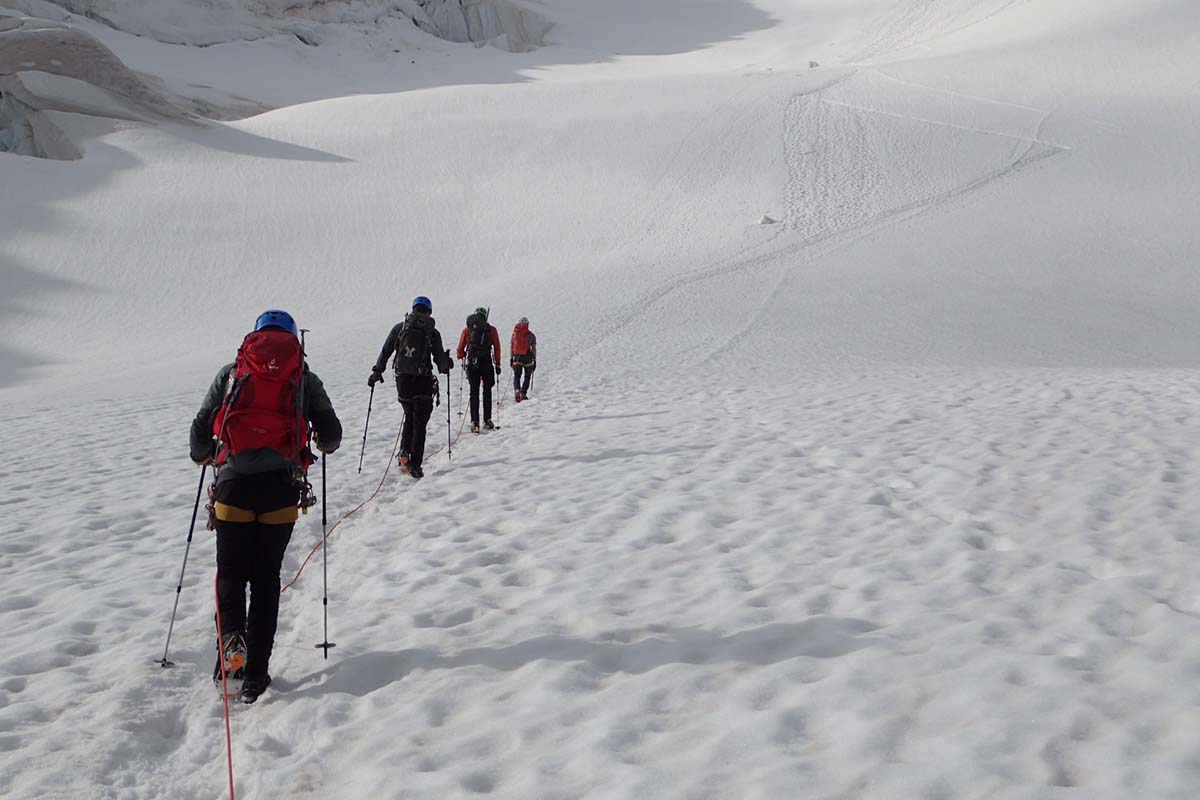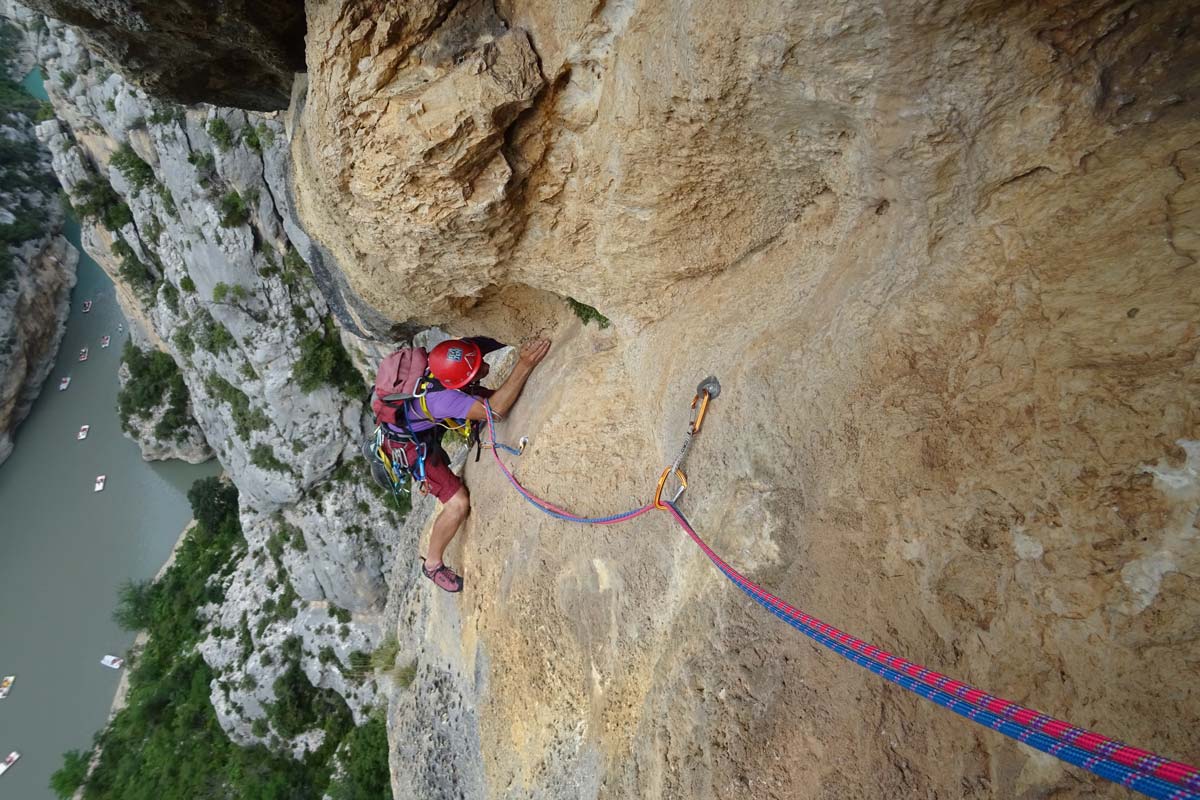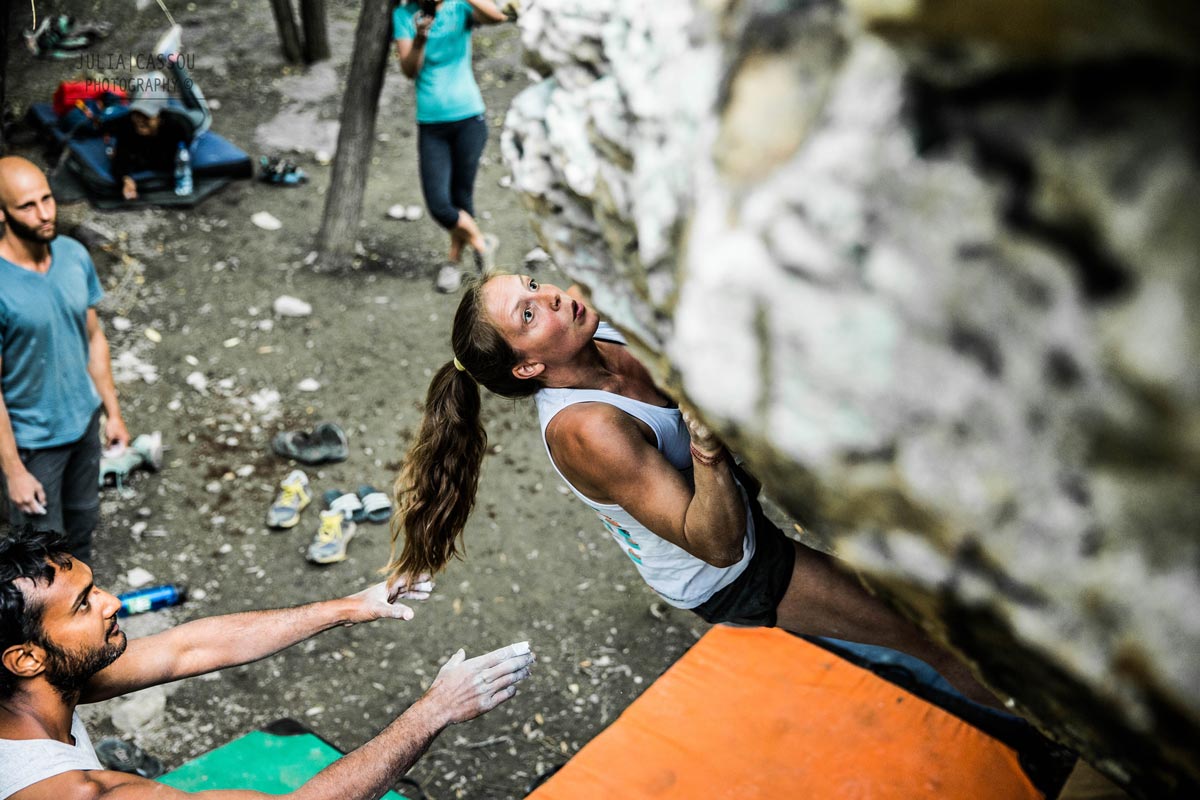Our recent article, How Frostbite Occurs, assessed how frostbite develops and its different stages. This related extract from the UIAA Alpine Skills Summer handbook focuses on treating frostbite in the field.
At basecamp or in a shelter
- Warm, sweet fluids.
- Aspirin: 500 to 1,000 mg (unless otherwise indicated) for pain and to prevent clotting in the small vessels.
How to quickly rewarm
- Hot water at 37 to 38° C + antiseptic, 30 minutes to 1 hour. Continue adding heat to maintain a consistent temperature.
- Wrap loosely in a sterile dressing.
After rewarming
-
- Feet: Do not walk; you must be carried. If you have to walk out, do not warm frostbitten feet, as the frostbite can recur.
- Hands: Do not touch anything.
- Do not burst blisters in the field (this carries a risk of serious infection).
- If a blister bursts, disinfect it and take a prescription antibiotic
Frostbite prevention
In the field, if you suspect frostbite has set in:
-
- Cover the victim’s torso.
- Remove any footwear.
- Replace wet socks and gloves with dry ones.
- Warm the extremities for a maximum of 10 minutes, without rubbing them.
- Replace footwear.
- Take aspirin (unless otherwise indicated).
- Hydrate.
If feeling returns, continue with your itinerary; if not, treat the frostbite.
Main Photo: Steve Long
Related Article:
–
This article is an extract from the ‘Cold’ chapter of the UIAA Alpine Skills Summer handbook. The entire guide is now available to purchase as a digital download. To purchase the guide please click here.
Previous extracts from the Guide can be found on our dedicated Skills page.
About the UIAA Alpine Skills Summer Guide
The UIAA Alpine Skills Summer guide was first published in 2015. Produced in collaboration with the Petzl Foundation, the guide and has been well received worldwide and is currently available in five languages. To mark the launch of a digital version of the publication, the UIAA is running a series of articles from the guide designed to help hikers, climbers and mountaineers develop their skills and knowledge of the mountain environment.
The guide was developed specifically as a reference document for trip leaders and instructors of club and federations within the UIAA – an aide memoire for climbers and mountaineers who attend training courses delivered by instructors and guides who have gained qualifications accredited by the UIAA. Now open to the wider climbing and mountaineering world, the handbook’s four modules focus primarily on summer activities. However, a specific winter guide is currently in production.




